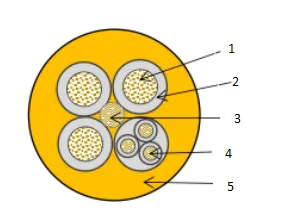nóv . 22, 2024 08:39 Back to list
air release valve
Understanding Air Release Valves Importance and Functionality
Air release valves play a crucial role in various fluid transport systems, mainly in water and wastewater management. These valves are designed to release trapped air within pipelines and tanks, helping to maintain operational efficiency and preventing potential problems caused by air accumulation. In this article, we will delve into the significance, types, and operational mechanisms of air release valves.
The Significance of Air Release Valves
Air can become entrained in fluid systems for several reasons, including changes in pressure, temperature variations, or the turbulence created during fluid movement. If left unchecked, this trapped air can lead to several issues, such as reduced hydraulic efficiency, increased operational costs, and potential damage to infrastructure. One of the most significant consequences of air accumulation is the phenomenon known as water hammer, a shock wave created by quick changes in fluid velocity. Water hammer can result in burst pipes, ruptured joints, and even catastrophic system failures.
Air release valves are critical in mitigating these risks. By allowing trapped air to escape, they ensure that the pipelines remain full of fluid, providing efficient flow and reducing the risk of cavitation, which can damage pumps and other equipment. Furthermore, these valves can also help maintain the correct operating pressure within systems, promoting longevity and reliability.
Types of Air Release Valves
Air release valves come in several types, each suited for specific applications
1. Automatic Air Release Valves These valves function without external intervention. They automatically open when air pressure builds up in the pipeline and close when the air is released, ensuring continuous operation.
air release valve

2. Combination Air Valves As the name suggests, these valves combine the functions of air release and air vacuum valves. They are versatile and can release trapped air while allowing air to enter the pipeline during drainage or vacuum conditions.
3. Float Air Valves These are specialized devices that use a buoyant float to open or close the valve. When air accumulates at the top of a pipeline, the float drops, allowing the air to escape.
4. Hydraulic Air Release Valves These valves utilize hydraulic mechanisms to detect and release trapped air. They are often used in large-scale systems, such as municipal water supplies, due to their reliability and efficiency.
Operational Mechanism
The basic operational mechanism of an air release valve involves a float, a valve body, and an outlet. As air accumulates in the pipeline, it rises to the top, where the air release valve is located. The float within the valve detects the presence of air. Once a threshold is reached, the float activates, causing the valve to open. This action allows the trapped air to escape, restoring normal pressure in the system.
Proper placement of air release valves is crucial for their effectiveness. They are typically installed at high points in pipelines, where air is likely to accumulate. Regular inspection and maintenance of these valves ensure that they function correctly and effectively prevent potential issues related to trapped air.
Conclusion
In summary, air release valves are indispensable components in fluid transport systems, enhancing efficiency, safety, and operational longevity. By effectively managing air within pipelines, they prevent issues that can lead to costly repairs and system failures. Understanding their function, types, and operational mechanisms is essential for professionals involved in water and wastewater management, engineering, and infrastructure maintenance. With proper use and maintenance, air release valves can significantly contribute to the efficient and safe operation of fluid systems.
Share
-
Reliable Wafer Type Butterfly Valves for Every IndustryNewsJul.25,2025
-
Reliable Flow Control Begins with the Right Ball Check ValveNewsJul.25,2025
-
Precision Flow Control Starts with Quality ValvesNewsJul.25,2025
-
Industrial Flow Control ReliabilityNewsJul.25,2025
-
Engineered for Efficiency Gate Valves That Power Industrial PerformanceNewsJul.25,2025
-
Empowering Infrastructure Through Quality ManufacturingNewsJul.25,2025